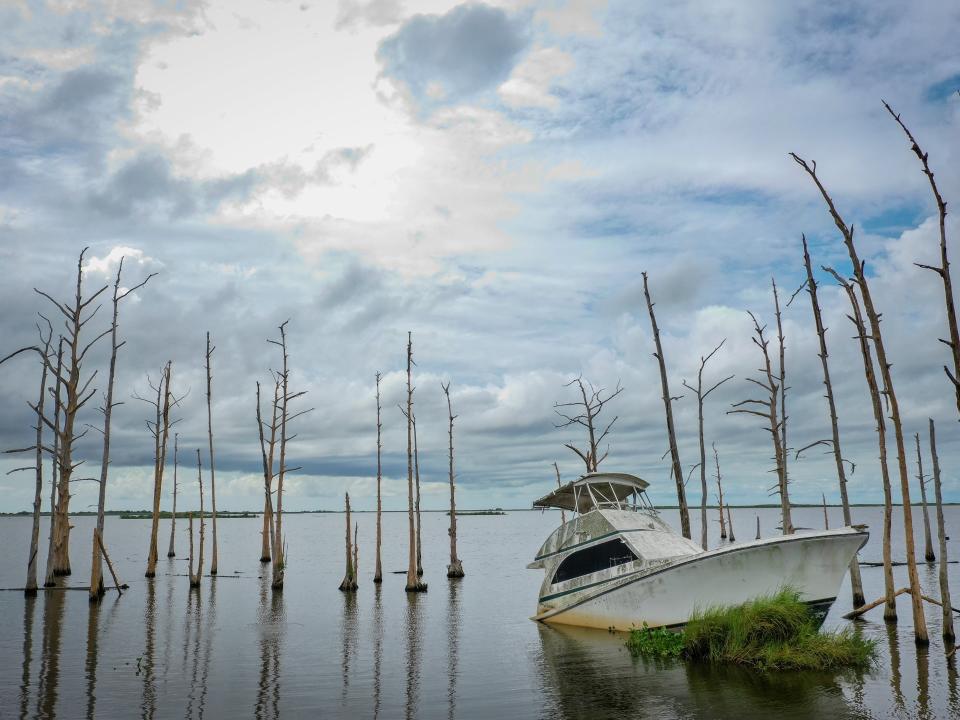‘Ghost forests’ are creeping along Eastern Coast in worrying sign of climate change

An abandoned boat sits in the water amid dead cypress trees in coastal waters and marsh August 26, 2019 in Venice, Louisiana
(Getty Images)Swathes of trees in America’s East Coast are being turned into lifeless "ghost forests” as rising sea levels suck the moisture from their seeds and soil.
Thousands of the leafless, branchless trunks and stumps can be seen increasing along the coast of North Carolina, where healthy forests once stood, researchers with Duke University have said.
The disturbing-looking trees come as a result of increased extreme weather events amid the climate crisis, as rising sea levels expose the trees and more land to salty seawater.
A new study published in journal Ecological Applications evaluating satellite images of a 245,000-acre area in the state’s Albemarle-Pamlico Peninsula has revealed the worrying growth of the phenomenon.
The images demonstrate that between 1985 and 2019, 11 per cent of the tree cover in the area had been taken over by ghost forests, with most of the spread correlating with extreme weather events, Duke Today says.
Read more:
Baltimore ends war on drugs with plot line straight from The Wire
246 fully vaccinated Michigan residents test positive for Covid and three die
Secret Service daughter goes viral on TikTok by sharing tips her father gives her
The study, published on 4 April, focuses on Alligator River National Wildlife Refuge, a 152,000-acre area located in eastern North Carolina, an area researchers call “the leading edge of climate change”.
During the study, satellite images were fed into a computer algorithm, and were then analysed for pines, hardwoods, shrubs, grassy marsh, open water or dead trees.
In 1985, more than three-fourths of the study area was covered in trees, but since then the refuge has lost more than 46,950 acres of forest, a quarter of what was there in 1985.
From 1900 to 2000 the sea is said to have risen about a foot in the area, faster than the global average.
As levels rise seawater seeps into the area and contaminates the soil, which then draws water out of plant cells and strips seeds of their moisture, eventually killing the trees.
The most substantial die-off of the trees reportedly occurred in 2012, when the area had suffered a five-year drought and the effects of Hurricane Irene in 2011.
“Because of its geological location, North Carolina is just ahead of other coastal areas in terms of how far sea level rise has progressed,” lead study author Emily Ury said in a statement to the university’s news hub.
Discussing the study in The Conversation, Ms Ury said that in the state, “evidence of forest die-off is everywhere”, reflecting climate changes that will “threaten wildlife, ecosystems, and local farms and forestry businesses”.
Worryingly, "it’s not just the fringe that’s getting wetter," Ms Ury, a biologist at the University in Durham, North Carolina, said in a statement.
“Lessons learned here could help manage similar transitions in other places,” she added.
Read More
How climate change is threatening Navajo ranchers’ way of life

 money
money 